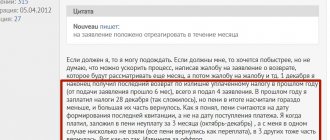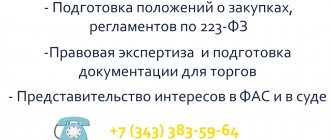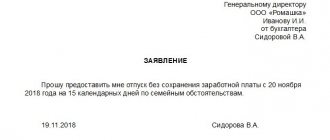Payment of VAT in installments
According to Article 174 of the Tax Code of the Russian Federation, VAT can be paid in installments. The tax that was calculated based on the results of the quarter can be divided into three equal parts and these equal parts must be paid within three months. The payment deadline is the 25th day of each month of the quarter following the quarter in which the tax was assessed. Tax payment deadlines can be found in the table.
| Quarter for which tax is paid | First quarter | Second quarter | Third quarter | Fourth quarter |
| First payment | Until April 25 | Until July 25 | Until October 25 | Until January 25 |
| Second payment | Until May 25 | Until August 25 | Until November 25 | Until February 25 |
| Third payment | Until June 25 | Until September 25 | Until December 25 | Until March 25 |
Example 1.
Success LLC filed a value added tax return for the 1st quarter of 2021. In the declaration in the first section, the amount indicates the amount of tax that must be paid to the budget in the amount of 51,000 rubles. To pay tax to the budget you need to divide 51,000 by 3 months. 51000/3=17000 rubles. Thus, tax payment will be made as follows:
- Until April 25 - 17,000 rubles;
- Until May 25 - 17,000 rubles;
- Until June 25 - 17,000 rubles.
For whom is it necessary to submit a declaration?
All the subtleties concerning one of the most complex taxes - VAT - are set out in Chapter 21 of the Tax Code of the Russian Federation. This clearly outlines the circle of business entities that are required to regularly submit VAT returns to the fiscal authorities. These include:
- legal entities, regardless of their form of ownership and organizational and legal form, using OSNO in their work;
- individual entrepreneurs working under the general system;
- subjects falling under the status of tax agents;
- organizations and individual entrepreneurs applying the “imputed” regime or simplified tax system – in situations provided for by tax legislation.
VAT reporting for “special regimes”
The use of simplified tax schemes - simplified tax system, UTII, unified agricultural tax, PSN - is the basis for releasing the taxpayer from the obligation to account for and pay VAT. But in a number of cases, “simplified” and imputed tax payers must, along with the reports required for them, submit a VAT return.
UTII and OSNO
If an LLC or individual entrepreneur combines two tax regimes in its work - UTII and OSN, then it must not only use separate accounting of business transactions, but also generate a VAT return on time. The deadline for submitting the report and paying the payment order for the amount of tax declared in the report does not differ from other taxpayers - the 25th day after the end of the quarter.
USN and Unified Agricultural Tax
When switching to a special tax regime, taxpayers exempt from VAT are required to pay tax and submit regular reports on it in the following cases:
- if the LLC/IP on the simplified market issues an invoice to the buyer with the allocation of VAT (except for intermediary transactions);
- in tax agency.
You should know: issuing an invoice and allocating VAT to exempt suppliers does not deprive the buyer of the right to claim a deduction.
When a “simplifier” conducts intermediary activities on his own behalf, without being a tax agent, he is obliged, before the 20th day of the month after the end of the quarter, to submit to the tax authority a journal of registered invoices, which replaces the VAT return.
Payment in unequal installments
According to the Information Notice of the Tax Inspectorate, value added tax can be paid in unequal installments. But the main thing is that the required amount is paid by the due date and credited to the required cash register. That is, you can pay the entire amount in the first month and not pay for two more months. Or pay half in the first month and half in the second month of the entire required amount for the quarter. Let's look at an example.
Example 2.
Success LLC filed a value added tax return for the 1st quarter of 2021. In the declaration in the first section, the amount indicates the amount of tax that must be paid to the budget in the amount of 38,000 rubles. To pay tax to the budget you need to divide 39,000 by 3 months. 39000/3=13000 rubles. Thus, tax payment will be made as follows:
- Until April 25 - 13,000 rubles;
- Until May 25 - 13,000 rubles;
- Until June 25 - 13,000 rubles.
But you can do it another way: pay, for example, 20,000 rubles before April 25, 6,000 rubles before May 25, and another 13,000 rubles before June 25. The law does not prohibit such splitting if there is an amount in the taxpayer’s personal account of at least 1/3 of the tax amount for the quarter in each month of the quarter following the reporting one, until the 25th day.
How to avoid falling under suspicion from the tax authorities?
The tax office does not announce exact criteria when it considers a transaction suspicious. But here are a few rules to help protect yourself.
DO NOT USE THE SERVICES OF COMPANIES that offer to conclude fictitious transactions. Some companies offer to conclude a deal on paper, as if they were supplying a product or providing a service. You can use it to deduct VAT. But this is illegal. And if the tax authorities discover such a transaction, there will be problems.
CHECK THE CONTRACTOR BEFORE THE TRANSACTION. Collect information about your partner before starting work: how long has the company been in business, is the director real, does the legal address match the real one. If not, are there many other legal entities located at this address? In legal parlance, this is called “exercising due diligence.”
Save all documents that can confirm the fact of verification of the counterparty. Take screenshots from websites that show the date and time. If you have to prove your case in court, you will need to show that you checked the counterparty before the transaction and did not find anything suspicious.
There are cases when companies win in court, proving that they exercised due diligence.
Checking the counterparty against the file of arbitration cases to find out in which legal proceedings it is involved.
How to round the payment amount
The situation where, when dividing by three months the entire amount of tax required to be paid to the budget, the result is a non-integer number, occurs quite often. In this case, the payment procedure is established by the Information Message of the Tax Inspectorate as follows: the first two months are rounded down, and in the last month rounded up. Let's look at an example.
Example 3.
Success LLC filed a value added tax return for the 1st quarter of 2021. In the declaration in the first section, the amount indicates the amount of tax that must be paid to the budget in the amount of 25,741 rubles. To pay tax to the budget you need to divide 25741 by 3 months. 25741/3=8580.33 rubles. Thus, tax payment will be made as follows:
- Until April 25 - 8580 rubles;
- Until May 25 - 8580 rubles;
- Until June 25 - 8581 rubles.
VAT benefits
There are VAT benefits. Some companies may not pay tax at all, others only on certain transactions.
SOME COMPANIES AND INDIVIDUAL INDIVIDUALS ARE NOT OBLIGED TO PAY VAT:
1) IP on UTII, simplified tax system and patent.
2) Participants of the Skolkovo project.
3) Individual entrepreneurs and companies on any tax system, if over the last three months their revenue is less than 2 million rubles. Even if the company is on the general taxation system. To obtain such an exemption, you will have to submit additional documents.
COMPANIES ON THE Unified Agricultural Tax operate under special conditions. From 2021, they pay VAT if they earn more than a certain amount in a year:
~100 million rubles for 2021;
~90 million rubles for 2021;
~80 million rubles for 2021, etc.
To receive benefits for the Unified Agricultural Tax, you need to submit documents for exemption. If this is not done, the company will have to pay VAT on any income.
SEPARATE OPERATIONS. There is no need to pay VAT on transactions such as:
~cash loans;
~sale of medical goods and services;
~transportation of passengers;
~stock trading.
The full list is in Art. 149 Tax Code of the Russian Federation
Features of submitting a tax return
Based on the books of purchases and sales, the taxpayer is required to fill out and submit a declaration at the place of his registration. This must be done before the 25th day of the month immediately following the reporting month. Thus, the declaration is provided:
- For the first quarter - until April 25;
- For the second quarter - until July 25;
- For the third quarter - until October 25;
- For the fourth quarter - until January 25.
Important! The declaration is provided only in electronic form. When submitting a declaration in paper form, it is considered not submitted.
VAT can only be refunded on business expenses
A company can only count on a deduction if it made purchases for business.
For example, if the owner bought new equipment for a business and registered it, he can safely include a VAT deduction in the declaration.
And if an entrepreneur bought his wife a new car so that she could take the children to kindergarten, this purchase does not affect the business. The entrepreneur is the final consumer of this product and pays VAT out of his own pocket. It cannot be included in the declaration.
DOCUMENTS FOR VAT DEDUCTION. To confirm the deduction, you need the following documents:
1) Invoices from suppliers.
2) Primary documents from suppliers that confirm that the transaction took place. These are invoices, certificates of completed work, etc.
3) Documents confirming the registration of goods, works or services. These can be acts of acceptance, extracts from KUDiR.
Invoices from suppliers must be recorded in the purchase ledger, and invoices issued by yourself must be recorded in the sales ledger.
For deductions for imports and exports, a special procedure for processing documents is provided. It is better to contact a professional, such as a customs broker.
HOW TO GET A VAT RECORD. To receive a deduction, you need to fill out a tax return electronically. It indicates the incoming and outgoing VAT, the amount of tax to be paid.
This is what the first page of your tax return looks like. The document has a total of 9 pages.
The tax office checks declarations as part of a desk audit. It takes place without the participation of the company.
They check it in a special program “ASK VAT 3”. It identifies breaks in the supply chain when information about a transaction in the declarations of the supplier and buyer differs. Gaps are not the only sign by which the tax authorities may consider a transaction suspicious. Inspectors say there are about two hundred such signs.
DURING THE INSPECTION, SEVERAL SITUATIONS ARE POSSIBLE.
IF EVERYTHING IS CLEAN ON THE TRANSACTIONS, the tax office simply accepts the declaration and the VAT paid. The company does not need to do anything additional.
IF A COMPANY OR CONTRACTOR CAUSES TAX SUSPICION, the tax office checks the entire chain of partners. He asks you to send supporting documents, explanations, or come to the tax office in person to prove the purity of the transactions.
IF THE COMPANY CANNOT EXPLAIN AND CONFIRM THE TRANSACTION, the tax office comes with an on-site inspection. If during the inspection process the inspector reveals violations, the tax office will go to court with a claim for payment of the hidden part of taxes, fines and penalties.
The larger the deduction, the more suspicious it arouses the tax authorities. But this does not mean that inspectors will immediately come with an inspection. An audit will only occur if the tax authorities suspect a dubious transaction.
Features of VAT calculation
The basic formula for calculating the fee involves calculating the corresponding tax based on the rate established by the state, as well as the size of the tax base. Regarding the first parameter, it can be presented in three varieties.
- Firstly, there is a zero VAT rate. It is established for goods that are exported to Russia, those that are sold under the free zone procedure at customs, as well as international transport services.
- Secondly, there is a 10% rate. According to it, the tax in question is calculated on the sale of food, goods for children, books, and medical goods.
- Thirdly, there is a rate of 18%. It applies VAT to other goods, works and services.
The base for the tax under consideration is the amount of the organization’s revenue.
Implementation with partial payment from the budget
Situation: is it necessary to pay VAT on budget subsidies to compensate for lost income from paying for housing and communal services at preferential rates?
No no need.
Budget subsidies are provided to organizations on a free and non-refundable basis to reimburse costs or lost income in connection with the production (sale) of goods, performance of work, provision of services (Clause 1 of Article 78 of the Budget Code of the Russian Federation).
Organizations that provide services at state regulated prices can be allocated budget subsidies:
- to cover losses incurred due to the use of state regulated prices;
- for compensation of expenses for the acquisition of goods (work, services) that are used to provide services sold at state regulated prices;
- to pay for services that the organization sells at state regulated prices.
In the first case, the budget covers only the loss that actually occurred in connection with the use of state regulated prices for a specific type of activity for a certain period of time.
In the second case, only the costs that the organization incurred in selling services at state-regulated prices are compensated from the budget.
In the third case, budget funds cover the entire amount of payment that the organization does not receive from preferential categories of consumers.
When selling goods (works, services) taking into account budget subsidies, the tax base is determined based on the actual prices of their sales. At the same time, the amounts of budget subsidies that an organization receives in connection with the use of regulated prices (tariffs) are not taken into account when determining the tax base (paragraph 3, paragraph 2, article 154 of the Tax Code of the Russian Federation).
Thus, in any of the above cases, there is no need to include the received budget subsidies in the VAT tax base.
Similar clarifications are contained in letters of the Ministry of Finance of Russia dated October 18, 2011 No. 03-07-11/279, dated March 22, 2011 No. 03-07-11/65 and dated May 12, 2010 No. 03-07-11/ 172.








